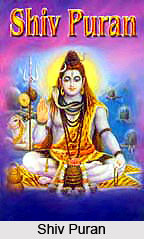 Origin of Man in Hindu Literature has been a subject that has been mentioned beginning from the descent of mankind to the creation of all living creatures. Lord Brahma is enchanted to have divided himself into male and female. From the union of one man and one woman was born mankind alone as well as all other living creatures as well. However this theory was found in the Vedas which has been modified later.
Origin of Man in Hindu Literature has been a subject that has been mentioned beginning from the descent of mankind to the creation of all living creatures. Lord Brahma is enchanted to have divided himself into male and female. From the union of one man and one woman was born mankind alone as well as all other living creatures as well. However this theory was found in the Vedas which has been modified later.
According to Shiva Purana Svayambhuva Manu is the first man born on earth and the woman was Satarupa, an ascetic woman. Their unison created beings. In the Upanishads the creation of five elements has been mentioned thereafter which came man. There are two sides to a human being- Brahman and Atma. Here again it has been reiterated that every man is like an egg which has two halves. The first half being the earth and the second half is heaven. Between this is ether. Breath is also included in this. These are luminaries of man. The half of man which represents earth is the part from the feet to the lower jaw and the part which represents heaven is the part between the upper jaw and the skull.
When darkness pervades human body demons are born. That`s how Lord Brahma created a demon that was issued from his thigh. From his side were born progenitors. Thereafter he assumed a body pervaded by foulness and from these men was born. The gods, men, demons and progenitors were reconstructed from previous forms and the bodies which were discarded by him became day, night, dawn and evening.
This article is a stub. You can enrich by adding more information to it. Send your Write Up to content@indianetzone.com



















